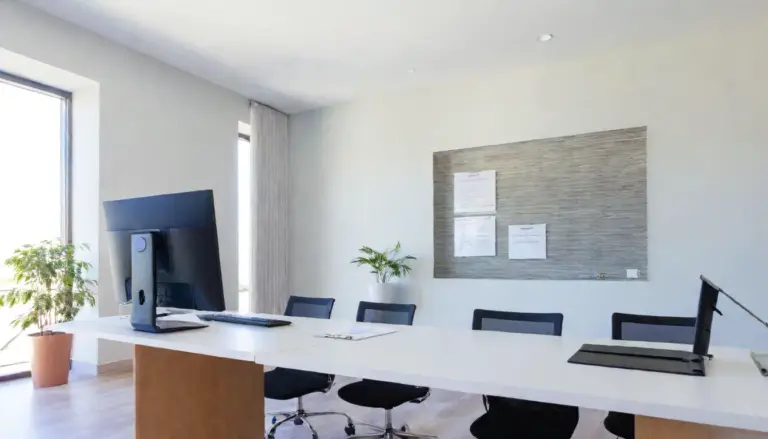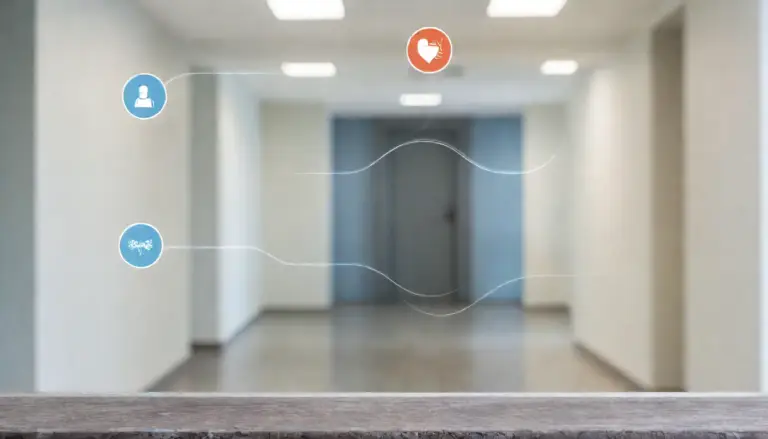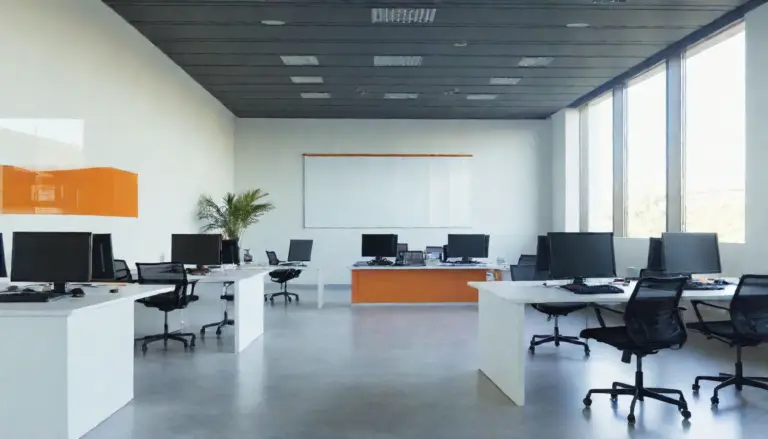Noise disturbances can be a significant problem in today’s workplaces, causing various detrimental effects on employees’ mental and physical health. Thankfully, loud noises do not have to dictate your employees’ well-being and productivity levels. There is a solution for noise disturbances in the workplace called sound masking. This can be a game-changer for offices of all kinds. Here’s what you need to know about sound masking technology, how it works, and ways it could benefit your office.
What Is Sound Masking?
You might not think adding more noise to a space could make it seem quieter, but that’s the principle behind sound masking technology. Sound masking works by raising the ambient noise of an environment to dampen the sound of speech and other disturbances. This creates a more tranquil space while increasing productivity.
Sound masking technology usually uses pink noise, which helps deafen distracting sounds from specific frequencies. Pink noise targets the same frequencies as human speech, making it harder to make out others’ conversations and easier to focus on your work.
Since pink noise encompasses many frequencies, it can block out human speech and other obnoxious noises like ringing phones, beeping alarms, or rustling papers. Pink noise sounds like airflow, making it barely distinguishable to the human ear.
Ways That Noise Affects Offices
When you walk into an office building, what do you hear? If your answer involves chatter, loud alarms, beeping noises, people walking around, and rustling paper, surrounding sounds negatively affect you, even if you don’t realize it. It’s easy to become desensitized to sound, to the point that we don’t acknowledge how it affects our daily mood. Let’s go over a few ways noise affects the workplace.
Harms Employees’ Mental Health And Productivity
Excessive noise can negatively affect employees’ well-being and performance. In fact, a report showed that 69% of employees globally claimed that noise affected their ability to concentrate and perform at work. Noise that affects productivity in the office comes in many forms. For example, loud chatter, beeping printers, shuffling documents, and ringing phones can quickly become distracting.
To make matters worse, that same study showed that about 44% of all employers do nothing to address noise in the workplace, even after it becomes a significant disturbance. When loud noises become uncontrollable, employees may struggle to complete their work or go home feeling discouraged and frustrated. Addressing noise in the workplace with technology like sound masking is critical for the wellness of everyone in your office.
Harms Employees’ Physical Health And Wellbeing
Not only do loud noise levels contribute to lower productivity in the workplace, but they can also pose health risks to employees. A study found that noise in the workplace has adverse physiological and psychological effects on employees, including higher blood pressure and heart rate. High blood pressure, also known as hypertension, puts you at risk for heart disease and stroke, the leading causes of death in the United States.
Exposure to loud noises, both briefly and consistently, can cause short-term physical symptoms like headaches or issues with digestion.
Sound masking is essential in offices or workplaces prone to loud noises. For example, hospital workers are subject to hearing an alarm noise every 90 sounds. This constant barrage of noise often results in fatigue, the inability to concentrate, and physical health issues like headaches.
The more noise in your workplace, the more critical it is to address the issue using sound masking technology.
Benefits Of Utilizing Sound Masking In Your Office
We have explained the many ways in which noise pollution can negatively affect employees’ health and well-being. Thankfully, sound masking technology is a great way to minimize these risks to protect your business and employees’ health.
There are numerous benefits to using sound masking in your offices, both for your employees and your business. Sound masking boosts employees’ productivity while allowing you to maintain confidentiality about private documents and information.
Minimizes Distracting Sounds
Sound masking minimizes distracting sounds by making them less audible and offensive to the ear. Some of the most distracting noises in the workplace include:
- Phones ringing
- Conversations between coworkers
- Laughter
- Printers beeping
- People moving around the workplace
One 2018 survey found that talkative coworkers or office noise are the biggest distractions most employees face in the workplace. About 80% of respondents placed “chatty coworkers” toward the top of their list and 70% chose “office noise.”
Prioritizes Privacy
One of the main benefits of sound masking is that this technology can dampen the noise of human speech. Thus, sound masking also helps with privacy in the workplace.
Open offices are becoming increasingly common, and while they encourage employees to communicate with one another, they can also result in confidentiality issues. If your coworkers or employees tend to handle sensitive information at work, implementing sound masking will ensure that those conversations stay between your employees. This prevents information from getting into the wrong hands.
If you work in a hospital or doctor’s office where patients’ information must be kept confidential, it can be a good idea to implement sound masking in employee areas and in the waiting room.
Protects Employees’ Health
By utilizing sound masking technology in your office, you can prevent employees from experiencing physical problems like headaches, digestive issues, fatigue, and burnout.
Creates Comfort
Considering office workers spend about 90% of their time indoors and 40 hours per week in the office, the comfort of the office space is worth considering. Employees may feel irritable, burnt out, and tired. They may even dread coming to work if they are faced with loud noises from the moment they walk through the doors to when they leave. By creating a comfortable office space, team members will be more productive and maintain a good attitude during their time in the office.
Types of Noise
Sound masking is made possible through various types of “noise.” Some of these include pink, white, and brown. As we mentioned, these types of noises are similar. However, there are some critical differences that business owners utilizing sound masking technology should consider.
What Is Noise?
Sound energy travels in the form of waves. Those waves vary in frequency and amplitude, resulting in the designation of various sound patterns. These specific patterns sound slightly different from one another to the human ear and are designated by different colors.
Pink Noise Vs. White Noise
White noise is the most commonly known type of noise, but pink noise is also used quite often. Pink noise covers all octaves and gives them equal power, which sounds better to the ear than white noise. Since it encompasses all octaves, pink noise is more effective at masking speech. While white noise sounds similar to TV static, pink noise sounds more like the sound of rustling leaves, airflow, or other natural sounds.
Since it is more pleasing to the ear and sounds less abrasive than white noise, pink noise is most commonly used in sound masking. Pink noise creates a natural background ambiance, covering up the sounds of noisy equipment like printers, loud talking, and other office disturbances.
How Sound Masking Works
Sound masking technology works by installing an audio system in or above the ceiling of your office. This audio system plays an ambient background sound that helps employees focus on the ambient noise rather than the distracting or stressful noises around them.
There are two types of sound masking: direct and indirect. Direct field sound masking involves mounting a speaker on the ceiling that points down toward the listener. Indirect sound masking involves mounting the speaker above the ceiling, allowing sound to reflect. Depending on various factors (i.e. the size of your building), direct or indirect sound masking might be better for your space.
Sound masking does not cancel out noises or make them objectively quieter. Instead, it works to eliminate people’s perception of sound by targeting the same frequencies as human speech. In other words, while sound masking cannot quiet people’s voices or lower the sound of a printer’s beeps, sound masking can make those noises quieter to the ear.
Sound Masking For Your Office
Sound masking technology is the solution for offices worldwide. Loud, consistent noises in the workplace can negatively affect your business’ success and your employees’ well-being. However, sound masking can bring the right kind of noise back into your office. If you are ready to hear more about how sound masking could benefit your office, contact Teksetra to learn more about what our certified technicians can do for your business!















